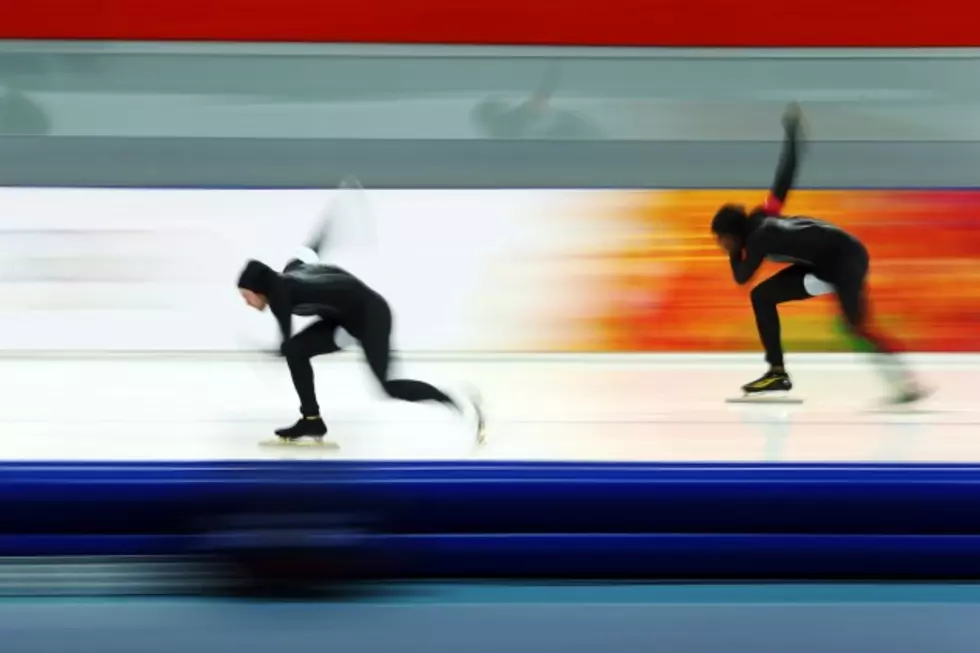
Winter Olympics: Built for Speed, U.S.’ Innovative Under Armour Skin Suits Hit the Ice
By Allyson Burger | BSU at the Games
Since the 2010 Winter Olympic Games in Vancouver, U.S. engineers in sports technology and aerospace have joined forces on a top-secret project.
What was it? Super-secret spy technology? A faster than the speed of light aircraft?
No.
The mission had one sole purpose: to make the fastest speedskaters in the world even faster.
Powerful partnership
Lockheed Martin, a Marietta, Ga.-based defense and aerospace firm, and Under Armour, a Baltimore-based sports apparel company, have been working for years on a superior speedskating suit -- called skins -- for Team USA to debut at the Sochi Winter Olympics.
The pair partnered to create new and improved designs for both long- and short-track speedskating from the ground up.
In traditional, long-track speedskating, the skin-tight racing suits skaters wear have hoods built in to decrease air resistance during a race, and they must conform to the natural shape of the skater’s body to best increase their speed.
Short-track speedskating skins are slightly different because of the added risk to athletes’ safety. Pack skating leads to injury more often than the two-lane skating in long track events.
The main distinction between the two is that, instead of the air-resistant hood, short track suits incorporate hard-shell helmets to better protect the skater from head trauma.
The suit that Under Armour and Lockheed Martin have given the name Mach 39 has been a tight-lipped project since the start of the partnership.
U.S. Speedskating, the sports’ national governing body, didn’t even budge when requests from media and sub-organizations flooded in to allow the innovative suits to be worn and displayed at the U.S. Olympic trials in Salt Lake City. The association was set from the start on debuting the uniforms in Sochi, Russia.
Anticipating something revolutionary
Why all the anticipation? What exactly makes these suits so revolutionary that they had to be kept secret and are now the talk of the skating world?
It has many of the same central elements as a standard skin. It's dark in color, with black replacing the traditional blue; clings to the natural contours of the body and has a hood or durable regulation helmet.
However, the Under Armour suit is the only one that is made with a unique smooth and slippery fabric that reduces air drag. That is just one of advanced features incorporated into the design expected to make it possible for the athletes to reach and maintain maximum speeds.
Most of the improvements and modifications are small, and are barely noticeable unless you know what to look for.
The first key change is an additional feature to reduce drag.
Kevin Haley, vice president for innovation at Under Armour, told National Public Radio that wind-tunnel tests proved it faster to disrupt the air with small bumps and dips in the design, like the surface of a golf ball. The indented polyurethane is built into the suit at the forearms, head and lower legs, the places where air transfer is most useful.
Another change, one that is more comfort-based than for improved speed, is the zipper.
Haley says the reason most skaters unzip and pull off their hoods after crossing the finish line is because the zipper in the old suits digs into their throat.
According to details released by Under Armour, the new suit's Soflex Zipper is a stretch-material zipper that detours the throat and crosses diagonally along the chest. It allows athletes to be more comfortable and aerodynamic, while also staying zipped up.
New features have also been added taking body heat into account, including an open panel made of mesh fabric in the back of the suit and HeatGear, an Under Armour-signature moisture-absorbing technology designed to keep sweat from weighing down the skin and slowing the skater.
Also for comfort, as well as protection, inside the suits have a cut-resistant lining to protect the skaters without reducing any of their comfort or mobility.
From secrecy to success?
Because of the secrecy involved, the overall capability and success of the Mach 39 skin suit remains to be seen in action during competition.
There have been few reservations about the suit’s efficiency, but there have been some budding jokes about the physical appearance and design since they were revealed Jan. 16.
“Fast or not, people will not be able to look away from the crotch of athletes wearing this suit,” Canadian blogger Spiro Papuckoski joked about the prominent light gray circle around the inside of the upper thigh of the otherwise black suit.
Under Armour's designers say the ArmourGlide material used around the thighs is built in to help reduce the measure of friction by 65 percent. So, the advantage of less friction and greater speed just might compensate for the possible faux pas in Sochi.
Olympic champion and NBC Sports speedskating commentator Dan Jansen seems to think the new design could go either way in competition, calling it evolutionary instead of revolutionary.
“When a race is decided by hundredths of a second, sometimes a thousandth now. And you might look back and maybe you wouldn’t know (small improvements to the suit are) the difference, but there’s a good chance that that would be the difference,” he said.
The debut race for the Mach 39 skin suits came Saturday during the men’s 5,000-meter long-track race at Adler Arena Skating Center.
If the technology and years of planning put into the Under Armour and Lockheed Martin suits accomplishes what it’s hoped to in Sochi, a new standard in skin suits will be set with only U.S. skaters having that edge on the ice.
100.5 The River is partnering with BSU at the Games to bring you full Winter Olympics coverage! Follow BSU at the Games on Twitter and Facebook.
More From Mix 95.7








